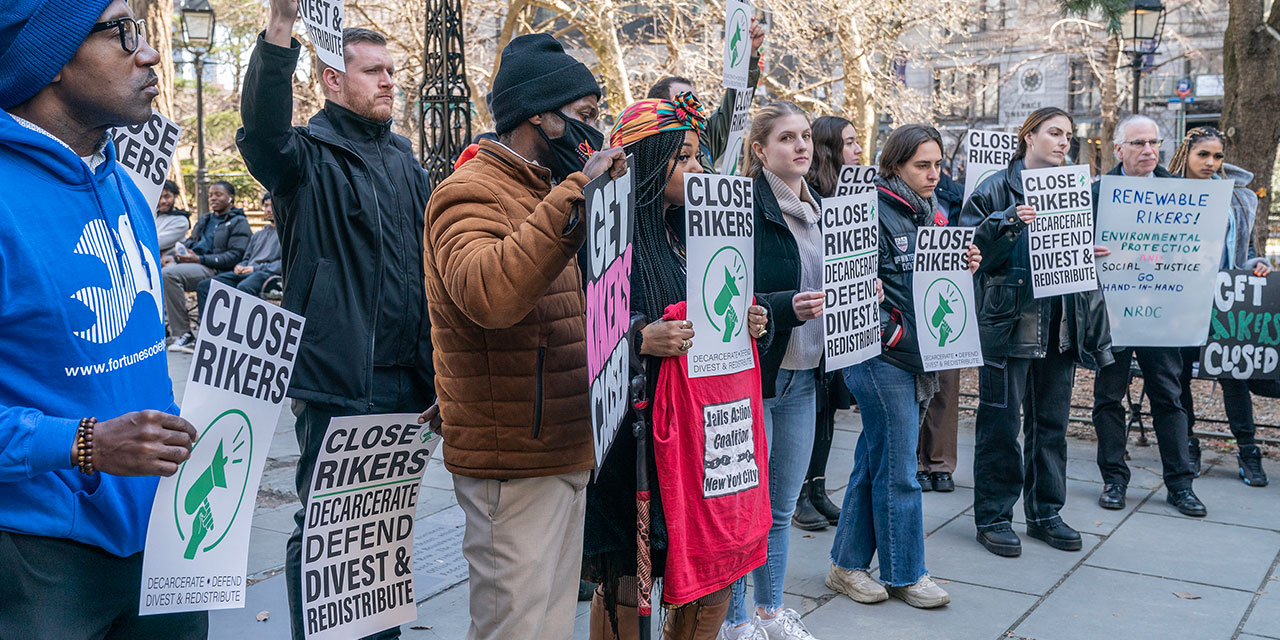
Finally, a welcome development for Rikers: last week, after years of mismanagement, the facility was placed under federal receivership by federal district judge Laura Taylor Swain. New York City should take this opportunity to fix Rikers—and scrap its costly and misguided plan to replace it with four new borough-based jails.
Rikers has been a mismanaged, dangerous, and inhumane detention center for years now. Detainees regularly obtain drugs and weapons, violence is rampant, and deaths in custody are far too frequent—with a high of 19 in 2022 and five so far this year.
Finally, a reason to check your email.
Sign up for our free newsletter today.
Receivership yields an independent “remedial manager,” focused on fixing Rikers within three years. That would mean finally making the reforms the New York City Department of Correction (DOC) should have made a decade ago, when the city entered into a 2015 consent decree stemming from a 2011 class-action lawsuit. That agreement established a federal monitor, who subsequently proposed more than 700 reforms. The DOC disregarded these, and violence and deaths rose, even as the jail’s population shrank.
New York should be relieved to lose control of Rikers. Advocates, including two former commissioners, have long supported receivership. Takeovers of other troubled prison systems by independent controllers—such as in Washington, D.C., Wayne County (Michigan), Fulton County (Georgia), the state of Alabama, and the California prison medical system—have resulted in successful reforms.
Ongoing mismanagement at Rikers has also emboldened left-wing city leaders ideologically committed to decarceration, decriminalization, and defunding the police. Just close Rikers in 2027, they argue, and the problem will vanish. Their associated plan, based on what Nicole Gelinas describes as “fanciful claims,” was to build new community-based jails with fewer beds in the Bronx, Queens, Brooklyn and Manhattan—this, despite residents’ desperation for more affordable housing and community centers, not jails.
The borough-based jails plan is, in fact, something of a historical throwback. Nearly a century ago, New York built Rikers because local jails were poorly run and because it was thought that a central location would allow for better management. Going back to the local jails model under the same management as before will only create four problem jails in place of the one.
Another drawback of the borough-based jails plan: the numbers don’t work. Rikers currently houses more than 7,000 detainees. The new community-based jails, when complete, will offer only 4,160 beds all together—and none of those beds will be ready by 2027.
The finances don’t add up, either. The $9 billion originally budgeted for building the new borough-based jails was woefully inadequate to begin with. The most recent cost estimate has ballooned to $33 billion, with further overruns expected from New York City’s notoriously budget-busting Department of Design and Construction.
Even with full funding, only one of the new jails is projected, optimistically, to be completed by 2029, with the others coming online after 2031. With no new jails in 2027, the only way Rikers could close would be if the city released massive numbers of detainees onto the streets. As City Journal’s Charles Fain Lehman has noted, given the reduction in Rikers’ population, the remaining inmates are disproportionately serious and violent criminals. And more than half of Rikers detainees suffer from mental illness—more than one-fifth, serious mental illness. Releasing detainees would have a devastating effect on public safety.
Clearly, Rikers cannot close now—but federal receivership presents city leaders with an opportunity. For a fraction of the cost of the unpopular, costly, and impractical borough-based jails plan, New York can create a much better, renovated, modernized Rikers. In fact, a plan for this already exists. On the spacious Rikers Island, the city can establish facilities and services for the mentally ill and drug-dependent, offer counseling and job training, and even provide sunny outdoor space.
Receivership offers a second chance—not just to fix what’s broken at Rikers, but to scrap an unworkable closure plan and finally build the kind of correctional system the city needs.
Photo by Lev Radin/Pacific Press/LightRocket via Getty Images
City Journal is a publication of the Manhattan Institute for Policy Research (MI), a leading free-market think tank. Are you interested in supporting the magazine? As a 501(c)(3) nonprofit, donations in support of MI and City Journal are fully tax-deductible as provided by law (EIN #13-2912529).
Source link

















